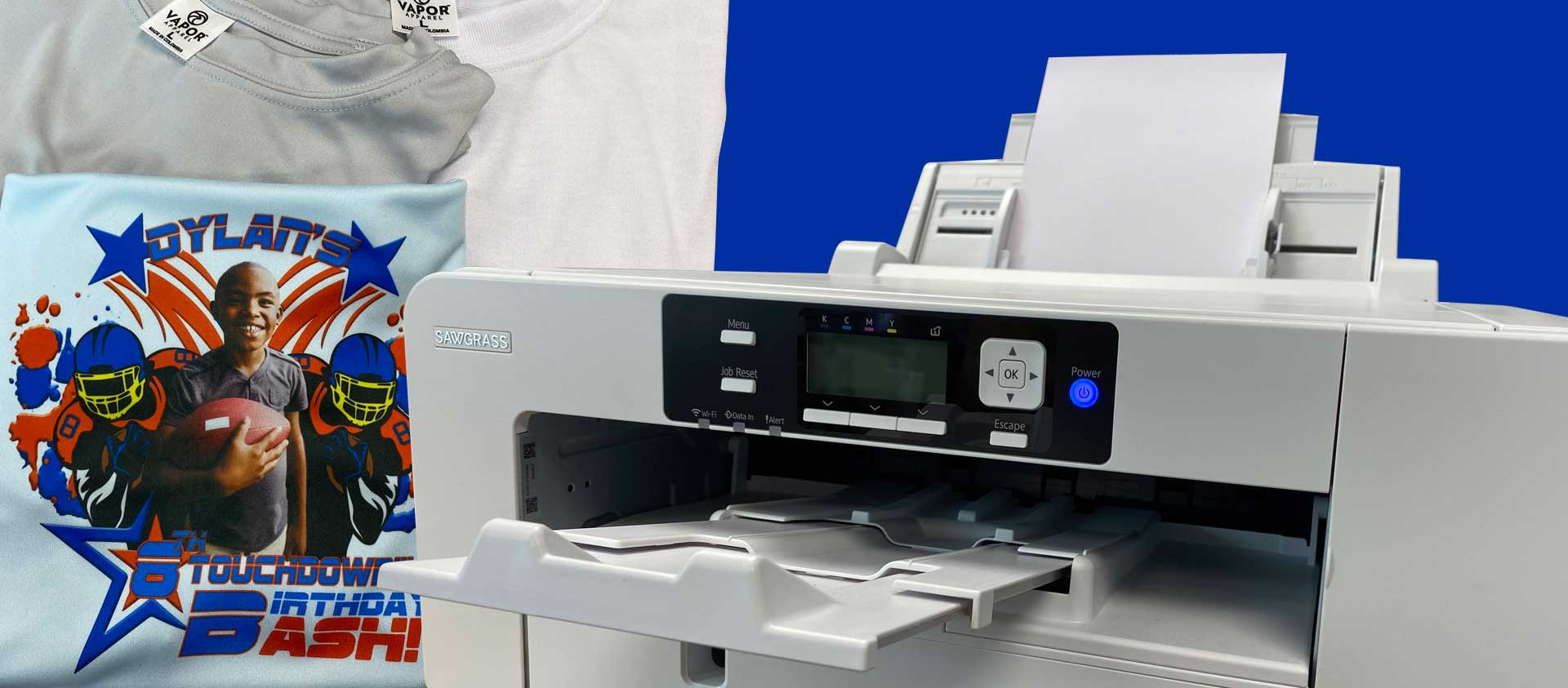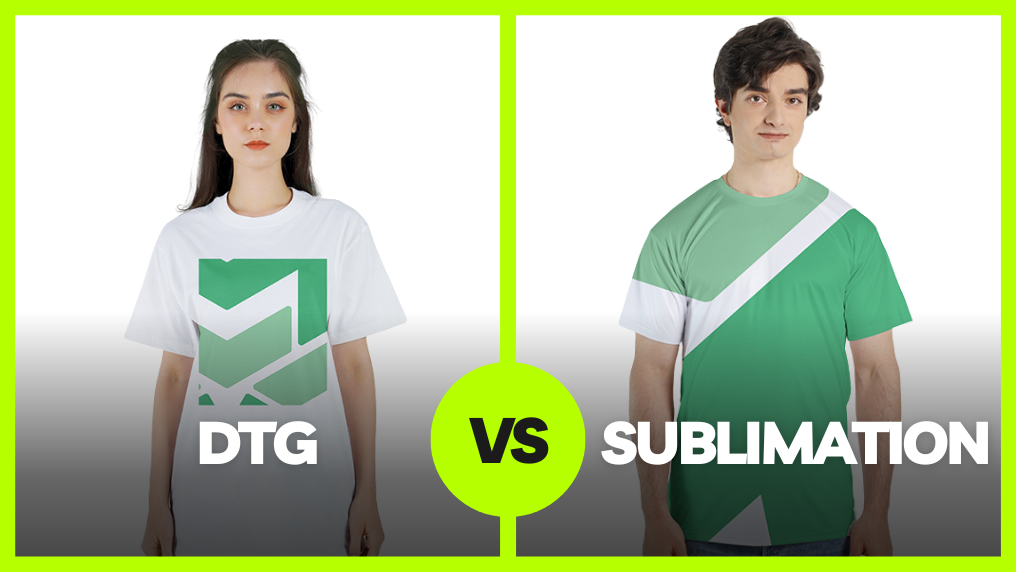Why DTF Printing is the Future of Custom Garments Production
Why DTF Printing is the Future of Custom Garments Production
Blog Article
From Typical to Digital: Comprehending the Advancement of Cloth Printing
The transformation of towel printing from traditional methods like block printing and withstand coloring to modern techniques such as display and electronic printing marks a substantial change in the textile market. How do these advancements affect the significance of fabric printing, and what might the future hold for this ever-evolving craft?
Traditional Towel Printing Techniques
In the beginning of fabric production, typical towel printing techniques worked as the cornerstone of fabric layout, using both performance and imaginative expression. Strategies such as block printing, resist dyeing, and stenciling were thoroughly created and fine-tuned over centuries, each adding unique practical applications and aesthetic qualities to the material market. Block printing, among the oldest approaches, included sculpting complex layouts into wooden blocks, which were then dipped in color and pushed onto fabric. This labor-intensive process enabled the repetition of detailed patterns, showcasing the craftsmen's ability and creative thinking.
Stand up to dyeing, including methods like batik and tie-dye, used wax or various other compounds to avoid color from penetrating certain locations of the material. This approach produced striking contrasts and intricate styles, usually imbued with cultural importance. Stenciling, one more standard technique, involved reducing patterns into a product and using dye with the openings, providing an easier yet reliable means to produce repetitive designs.
These traditional approaches not just shaped the fabric market's early advancement but additionally laid the foundation for future innovations. Each technique reflected the local and social characteristics of its beginning, preserving and distributing artisanal expertise with generations.
The Increase of Display Printing
How did display printing change the landscape of textile layout? The advent of display printing in the very early 20th century noted a significant separation from traditional approaches, supplying unmatched flexibility and efficiency. This strategy entails pressing ink with a fine mesh screen that has been stenciled with a style, enabling high precision and consistency. Screen printing enabled developers to produce intricate patterns and lively shades on materials, which were previously testing to achieve with block printing or hand-painting approaches.
Among the crucial benefits of screen printing is its capability to duplicate complicated layouts on a large scale with amazing integrity. This scalability made it tremendously prominent in the industrial textile sector, where automation without compromising high quality is vital. Display printing suits a vast range of dyes and inks, broadening the scheme of structures and coatings offered to developers.
Moreover, the procedure is very adaptable, appropriate for numerous textile types consisting of cotton, silk, and synthetics. This adaptability, combined with its cost-efficiency for huge runs, solidified display printing's function as a foundation of contemporary fabric manufacturing. Therefore, the rise of display printing transformed the industry, pushing the borders of what was possible in textile layout.

The Introduction of Digital Printing
Structure on the amazing improvements brought by display printing, the fabric sector experienced another groundbreaking development with the advent of digital printing. Arising in the late 20th century, digital printing revolutionized the means designs are transferred onto materials, supplying extraordinary flexibility and efficiency. Unlike typical approaches, which often called for extensive setup and substantial hand-operated treatment, electronic printing uses computer-aided style (CAD) innovation to produce elaborate patterns straight onto the fabric with high precision.
This technology has allowed textile producers to satisfy the expanding demand for personalization and on-demand production. By eliminating the requirement for plates and displays, digital printing reduces preparations and minimizes material waste, making it a much original site more sustainable option. The capability to publish complex photos and a vast array of shades in a solitary pass has opened up new imaginative opportunities for developers, promoting a surge in creative expression within the industry.
Furthermore, digital printing sustains smaller sized batch manufacturing runs, which is specifically beneficial for niche markets and start-up style brands. This technological jump has not just enhanced operational effectiveness yet likewise democratized accessibility to high-quality fabric printing, setting the stage for future technologies in textile layout and manufacturing.
Comparing Techniques: Traditional Vs. Digital
While both typical and digital printing techniques have their very own unique advantages, they differ substantially in regards to process, efficiency, and ecological impact. Standard fabric printing, click to find out more encompassing strategies like block printing and screen printing, entails manual labor and detailed craftsmanship. These approaches are commemorated for their capacity to create vivid colors and abundant structures, frequently resulting in one-of-a-kind, artisan-quality products. Nevertheless, they are labor-intensive, lengthy, and usually limited in terms of shade range and design complexity.
On the other hand, electronic printing uses innovative innovation to transfer designs directly onto fabric making use of inkjet printers. This technique uses exceptional precision and a huge selection of shade alternatives, allowing very comprehensive and complex styles. Digital printing is dramatically faster, enabling fast turn-arounds and just-in-time manufacturing, which reduces the demand for big inventory storage. Additionally, it sustains customization and tiny batch manufacturing, dealing with contemporary consumer demands for customized items.
From an ecological perspective, digital printing is usually much more sustainable. It makes use of less water and generates marginal waste contrasted to standard techniques, which usually entail extensive cleaning and dyeing processes. Subsequently, digital printing is progressively preferred in an era where ecological considerations are critical.
Future Fads in Fabric Printing
As the textile sector continues to advance, future fads in fabric printing frequently aim towards better assimilation of webpage technology and sustainability. One significant fad is the raised application of electronic printing innovations. These innovations permit for higher accuracy, much faster production times, and the capacity to produce complicated layouts that were once challenging with traditional techniques. Digital textile printing is expected to control the market, driven by its efficiency and flexibility to customer demands for individualized and limited-edition items.

Additionally, the consolidation of smart fabrics, which incorporate electronic parts right into materials, is readied to reinvent the market. These fabrics can provide additional functionalities such as temperature level guideline, health and wellness surveillance, and interactive features. As innovation proceeds to development, the crossway of digital printing and clever textiles will certainly open new methods for innovative and practical applications in cloth printing.
Verdict
The development of towel printing from typical approaches to digital advancements marks a considerable change in the fabric sector. While standard techniques highlight artisanal craftsmanship and cultural heritage, electronic printing supplies unparalleled accuracy, efficiency, and personalization. This change not only enhances production capacities however likewise sustains sustainability initiatives. Future patterns are most likely to proceed integrating advanced technologies, even more redefining textile design and production processes to satisfy modern needs and environmental factors to consider (heat transfer vinyl printing).
The transformation of towel printing from standard techniques like block printing and withstand coloring to modern strategies such as display and digital printing marks a substantial shift in the textile market. Screen printing allowed designers to produce detailed patterns and dynamic shades on fabrics, which were formerly testing to achieve with block printing or hand-painting methods.
Structure on the remarkable developments brought by screen printing, the fabric market experienced another groundbreaking development with the arrival of digital printing. DTF printing. Traditional towel printing, incorporating techniques like block printing and display printing, involves hands-on labor and detailed craftsmanship. As modern technology proceeds to advance, the crossway of electronic printing and clever fabrics will certainly open up brand-new avenues for functional and innovative applications in towel printing
Report this page